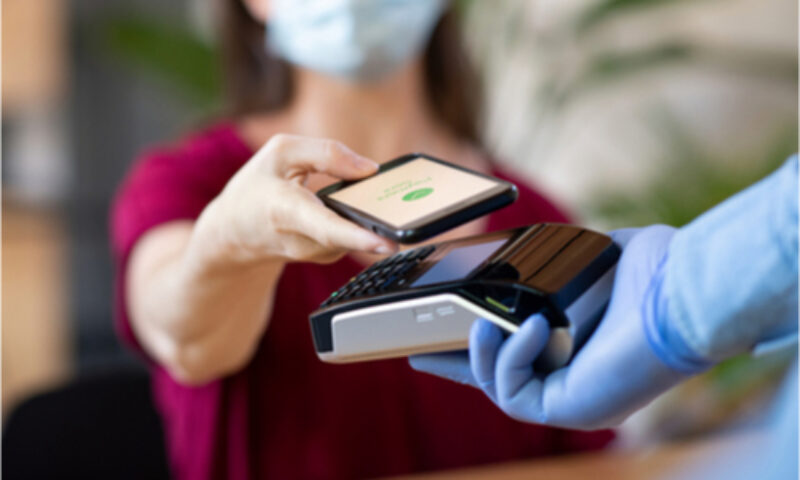You may have heard about digital currencies in the news. And now, the Bank of England (BoE) is exploring the possibility of introducing a digital pound. Read on to find out what it means and why a digital currency could come to the UK.
How we use money has changed enormously over the last few decades.
It wasn’t too long ago that most transactions involved cash. Now, using your card, paying for goods online, or tapping your phone at a checkout are common.
According to UK Finance, 57% of all payments in the UK were made using cards in 2021. The Covid-19 pandemic, when many businesses encouraged contactless payments, and an increased limit of £100 mean use of contactless has soared. In 2015, just 3% of payments were contactless, but by 2021 this had increased to 32%.
In contrast, cash was used in just 15% of all payments in 2021 after an annual decline of 1.7%.
So, what’s next for money in the UK? By the end of the decade, you could be using a digital pound to pay for goods and services.
What does the digital pound mean?
The digital pound has been referred to as “digital sterling” or “Britcoin” in the press. It would be a type of central bank digital currency (CBDC) issued by the BoE.
While it’d be a new type of money, it would be linked to sterling and its value would be stable. 10 digital pounds would have the same value as a £10 note.
CBDCs are often confused with cryptocurrency, but they are not the same. A cryptocurrency is issued privately and the value is often volatile. In comparison, the digital pound would be issued by the BoE and backed by the government, so the value would be far more stable.
The currency would be held in a digital pound wallet, which you could use to pay for services by tapping your smartphone, like you do with contactless payments, or entering details online. You would also be able to transfer money to another person, a business, or between your own accounts.
The BoE added it recognises how important cash is to many people – the digital pound wouldn’t replace the coins and notes in your wallet.
The Bank of England says the digital pound is needed to fulfil its mission
Answering why a digital pound is needed, the BoE says: “There are new forms of money on the horizon. Some of these could pose risks to the UK’s financial stability.”
It adds: “The money we issue as the UK’s central bank is the anchor of confidence in our monetary system. This type of money supports the UK’s monetary and financial stability. Today, banknotes are the only type of money we provide for the public to use. Having a digital pound could help us to keep providing this anchor for the UK.”
As more payments become digital, the digital pound could also help keep “uniformity”. This is where you can exchange one type of money for another. For instance, you can withdraw money from your bank account as cash at an ATM.
The digital pound could be in use by the end of the decade
The introduction of the digital pound is still at least several years away, but it could be in use by the end of the decade. The BoE is currently reviewing the technology and policy requirements for its introduction.
Other countries are further along in the process of introducing a CBDC.
In October 2020, the Bahamas launched the first nationwide CBDC, known as the “Sand Dollar”. So far, four CBDCs have been launched in 11 countries. Sweden is also in the testing phase of launching its “e-krona”, and China is expected to start using the “digital yuan” later this year.
From a consumer perspective, the digital pound would mean you have more choice and transactions may be faster, if not immediate.
A House of Commons report suggests the technology may also open up a range of innovations that could benefit consumers and businesses, including:
-“Programmable money” that enables transactions to occur according to certain conditions, rules or events
-Automatic payment of taxes at the point of sale
-Allowing the government to make direct transfers to individuals
-Automatic payment of dividends directly to shareholders
-Electricity meters paying suppliers directly, based on power usage
-Making “micropayments” at much lower costs, allowing further innovations, such as paying a few pence rather than a subscription to read an online newspaper article.
Of course, there are challenges too. The report noted the possible risk of cyberattacks and breaches in data privacy, as electronic payment systems are less anonymous. It also stated concerns that unreliable internet connectivity might affect accessibility.
While some way off, the digital pound could revolutionise how we use money in the coming years.
Please note: This blog is for general information only and does not constitute advice. The information is aimed at retail clients only.

